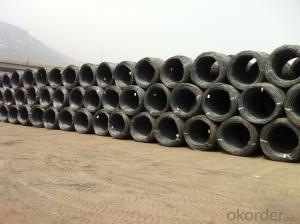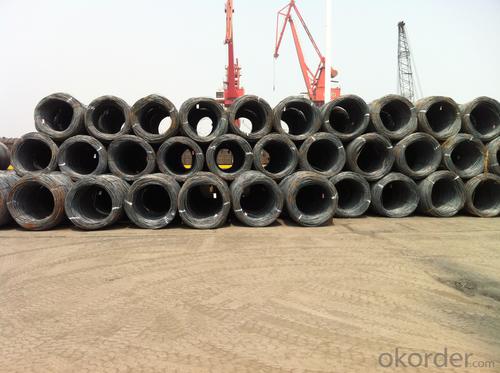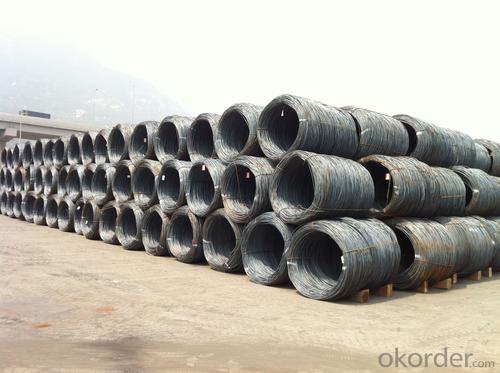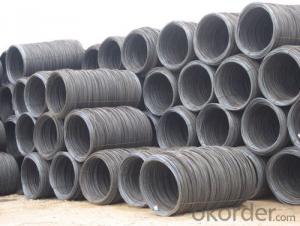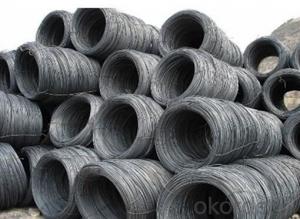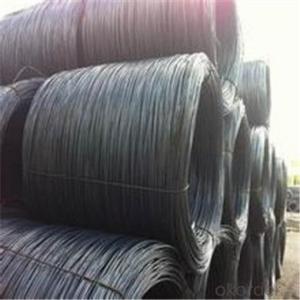Wire rods With High quality and Best Price
- Loading Port:
- Tianjin
- Payment Terms:
- TT OR LC
- Min Order Qty:
- 25 m.t.
- Supply Capability:
- 20000 m.t./month
OKorder Service Pledge
OKorder Financial Service
You Might Also Like
OKorder is offering high quality Hot Rolled Wire Rods at great prices with worldwide shipping. Our supplier is a world-class manufacturer of steel, with our products utilized the world over. OKorder annually supplies products to European, North American and Asian markets. We provide quotations within 24 hours of receiving an inquiry and guarantee competitive prices.
Product Applications:
Hot Rolled Wire Rods are ideal for structural applications and are widely used in the construction of buildings and the manufacturing, industries.
Product Advantages:
OKorder's Wire Rods are durable, strong, and resist corrosion.
Main Product Features:
· Premium quality
· Prompt delivery & seaworthy packing (30 days after receiving deposit)
· Corrosion resistance
· Can be recycled and reused
· Mill test certification
· Professional Service
· Competitive pricing
Product Specifications:
Manufacture: Hot rolled
Grade: SAE1006 – SAE1008
Certificates: ISO, SGS, BV, CIQ
Length: 6m – 12m, as per customer request
Packaging: Export packing, nude packing, bundled
Grade | Chemical Composition (%) | |||||
C | Mn | S | P | Si | B | |
SAE1006B | 0.03~O.07 | 0.32max | 0.045max | 0.040max | 0.30max | 0.0008min |
Mechanical properties | ||||||
Yield strength(N/mm2) | Tensile strength(N/mm2) | Elongation (%) | ||||
250-280 | 350-380 | ≥32 | ||||
Grade | Chemical Composition (%) | |||||
C | Mn | S | P | Si | B | |
SAE1008B | 0.10max | 0.3~0.50 | 0.050max | 0.040 max | 0.15max | 0.0008 min |
Mechanical properties | ||||||
Yield strength(N/mm2) | Tensile strength(N/mm2) | Elongation (%) | ||||
≥195 | 315-430 | ≥30 | ||||
FAQ:
Q1: Why buy Materials & Equipment from OKorder.com?
A1: All products offered byOKorder.com are carefully selected from China's most reliable manufacturing enterprises. Through its ISO certifications, OKorder.com adheres to the highest standards and a commitment to supply chain safety and customer satisfaction.
Q2: How do we guarantee the quality of our products?
A2: We have established an advanced quality management system which conducts strict quality tests at every step, from raw materials to the final product. At the same time, we provide extensive follow-up service assurances as required.
Q3: Can stainless steel rust?
A3: Stainless does not "rust" as you think of regular steel rusting with a red oxide on the surface that flakes off. If you see red rust it is probably due to some iron particles that have contaminated the surface of the stainless steel and it is these iron particles that are rusting. Look at the source of the rusting and see if you can remove it from the surface.
Images:
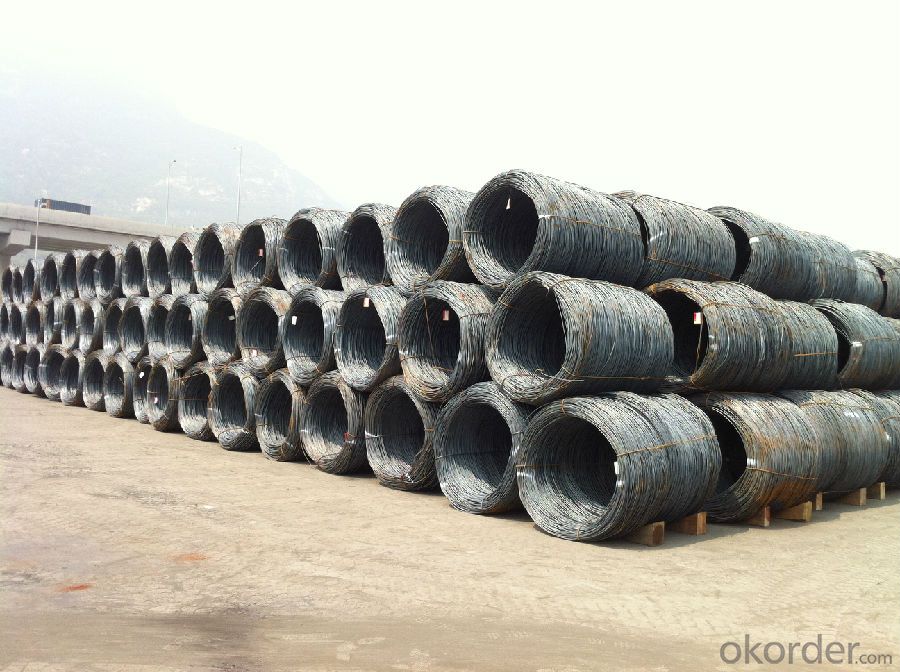
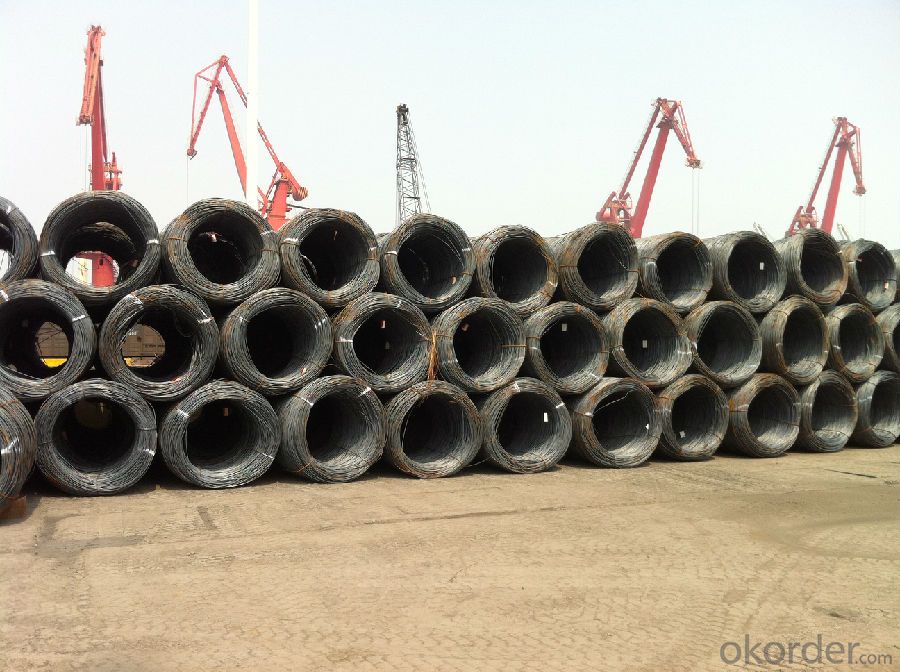
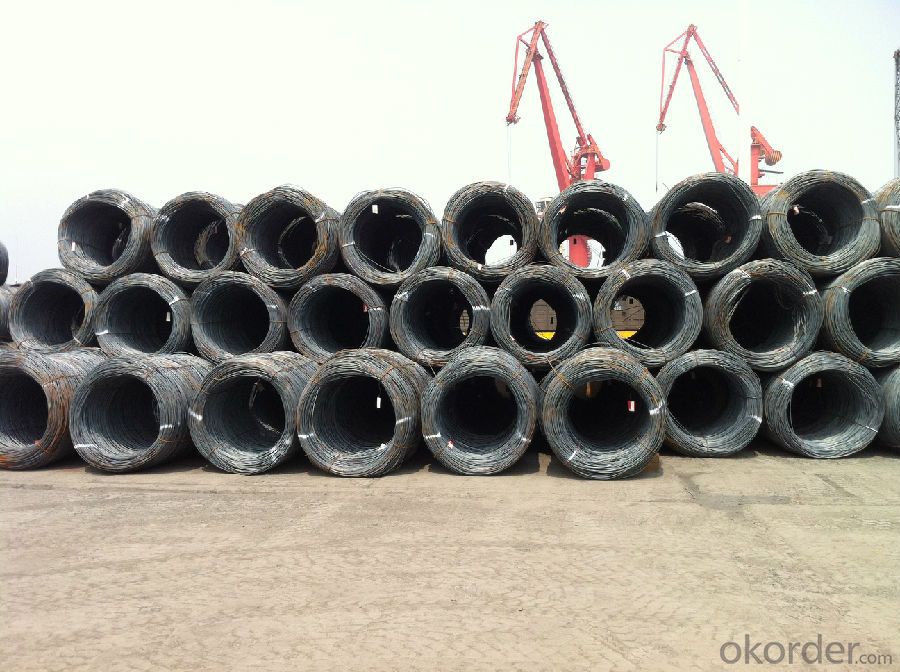
- Q: What are the main factors influencing the choice of steel wire rod packaging?
- The main factors influencing the choice of steel wire rod packaging include the weight and size of the wire rod, the required protection and safety during transportation, the storage conditions, the specific industry requirements, and the cost-effectiveness of the packaging solution.
- Q: What are the different types of steel wire rod finishes?
- There are various finishes for steel wire rods, each with its own purpose and characteristics. Some commonly used finishes are: 1. Black finish: This is a simple, untreated finish that gives the steel wire rod a dark, black color. It offers minimal protection against corrosion and is commonly used in non-structural applications where appearance is not important. 2. Galvanized finish: This finish involves applying a layer of zinc to the steel wire rod to protect it from corrosion. The zinc coating provides excellent resistance to rust and is often used in outdoor or moisture-exposed applications. 3. Coated finish: Steel wire rods can be coated with different materials, such as PVC or nylon, to enhance their resistance to corrosion and abrasion. These coatings can also improve electrical insulation or provide better grip for specific purposes. 4. Stainless steel finish: Stainless steel wire rods are made from an alloy containing a high percentage of chromium, which gives them excellent corrosion resistance. This finish is commonly used in industries like food or medicine, where cleanliness, durability, and resistance to corrosion are important. 5. Bright finish: This finish involves a mechanical or chemical process that removes impurities and oxidation from the surface of the steel wire rod, leaving it smooth and shiny. Bright finishes are often used for decorative purposes or when a visually appealing appearance is desired. 6. Phosphated finish: Phosphating is a chemical process that creates a layer of phosphate coating on the surface of the steel wire rod. This finish enhances corrosion resistance and improves adhesion for painting or further coating, making it suitable for applications requiring such treatments. These examples represent just a few of the available finishes for steel wire rods. The choice of finish depends on the specific requirements of the application, such as corrosion resistance, appearance, or functional properties needed.
- Q: What are the common production processes for low carbon steel wire rod?
- The common production processes for low carbon steel wire rod include heating and melting the steel, casting it into billets, hot rolling the billets into wire rod, cooling and coiling the wire rod, and finally, inspection and packing.
- Q: How is the hardness of steel wire rod measured?
- Steel wire rod is commonly assessed for hardness using the Rockwell hardness test, a method that entails applying a specific load to press a diamond or hardened steel ball onto the rod's surface. The resulting indentation depth serves as a determinant of the wire rod's hardness. Due to its simplicity and reliable outcomes, the Rockwell hardness test finds extensive application in the industry.
- Q: What are the common production processes for titanium-coated steel wire rod?
- The common production processes for titanium-coated steel wire rod include wire drawing, cleaning and pickling, titanium coating, and heat treatment.
- Q: Can steel wire rod be used in the production of springs?
- Yes, steel wire rod can be used in the production of springs. Steel wire rod is commonly used due to its high strength and durability, which are essential characteristics for springs that need to withstand repeated stress and maintain their shape over time.
- Q: What are the main factors affecting the market policies of steel wire rod?
- The main factors affecting market policies of steel wire rod include supply and demand dynamics, global economic conditions, trade policies and regulations, technological advancements, pricing trends, and competition within the industry. Additionally, factors such as raw material availability, environmental regulations, and government policies related to infrastructure development and manufacturing also play a significant role in shaping market policies for steel wire rod.
- Q: How are steel wire rods used in the manufacturing of wire baskets for organizing items?
- Steel wire rods are a crucial component in the manufacturing of wire baskets used for organizing items. These rods are primarily used to form the structure and framework of the basket, providing strength and durability. To create wire baskets, the steel wire rods are first processed through various manufacturing techniques such as drawing, annealing, and galvanizing. Drawing involves pulling the rods through a series of dies to reduce their diameter and achieve the desired thickness for the basket. Annealing, a heat treatment process, helps to relieve stress and improve the flexibility and malleability of the rods. Galvanizing is often done to protect the steel wire rods from corrosion, making them more suitable for long-term use. Once the steel wire rods are prepared, they are then shaped into the desired basket form. This is typically done by bending and welding the rods together to create the basket's frame and mesh structure. The rods are bent using specialized machinery that can form them into the required shape, such as a square, rectangular, or circular basket. During the welding process, the rods are joined together at various points to ensure the stability and strength of the basket. This welding process can be done manually or through automated machinery, depending on the scale of production. Welding not only reinforces the structure but also enhances the durability of the wire basket, making it capable of withstanding heavy loads and constant use. Once the basic structure is formed, additional features such as handles, dividers, or compartments may be added to the wire basket. These features can be attached to the steel wire rods either through welding or other fastening methods, providing further organization and convenience for users. Overall, steel wire rods play a vital role in the manufacturing of wire baskets for organizing items. Their strength, flexibility, and corrosion resistance make them ideal for creating sturdy and durable baskets capable of organizing and storing various items efficiently.
- Q: What are the different mechanical tests conducted on steel wire rod?
- There are several mechanical tests conducted on steel wire rod, including tensile strength test, hardness test, impact test, and fatigue test. These tests help determine the strength, hardness, toughness, and durability of the steel wire rod, ensuring its suitability for various applications.
- Q: How can steel bars and bars be differentiated from each other in different uses?
- Wire rod used before the use of steel straightening machine, straightening, blanking, but also in the machine to remove oxidation rust skin, but also in repeated bending and stretching, the intensity has improved.
Send your message to us
Wire rods With High quality and Best Price
- Loading Port:
- Tianjin
- Payment Terms:
- TT OR LC
- Min Order Qty:
- 25 m.t.
- Supply Capability:
- 20000 m.t./month
OKorder Service Pledge
OKorder Financial Service
Similar products
Hot products
Hot Searches
Related keywords

